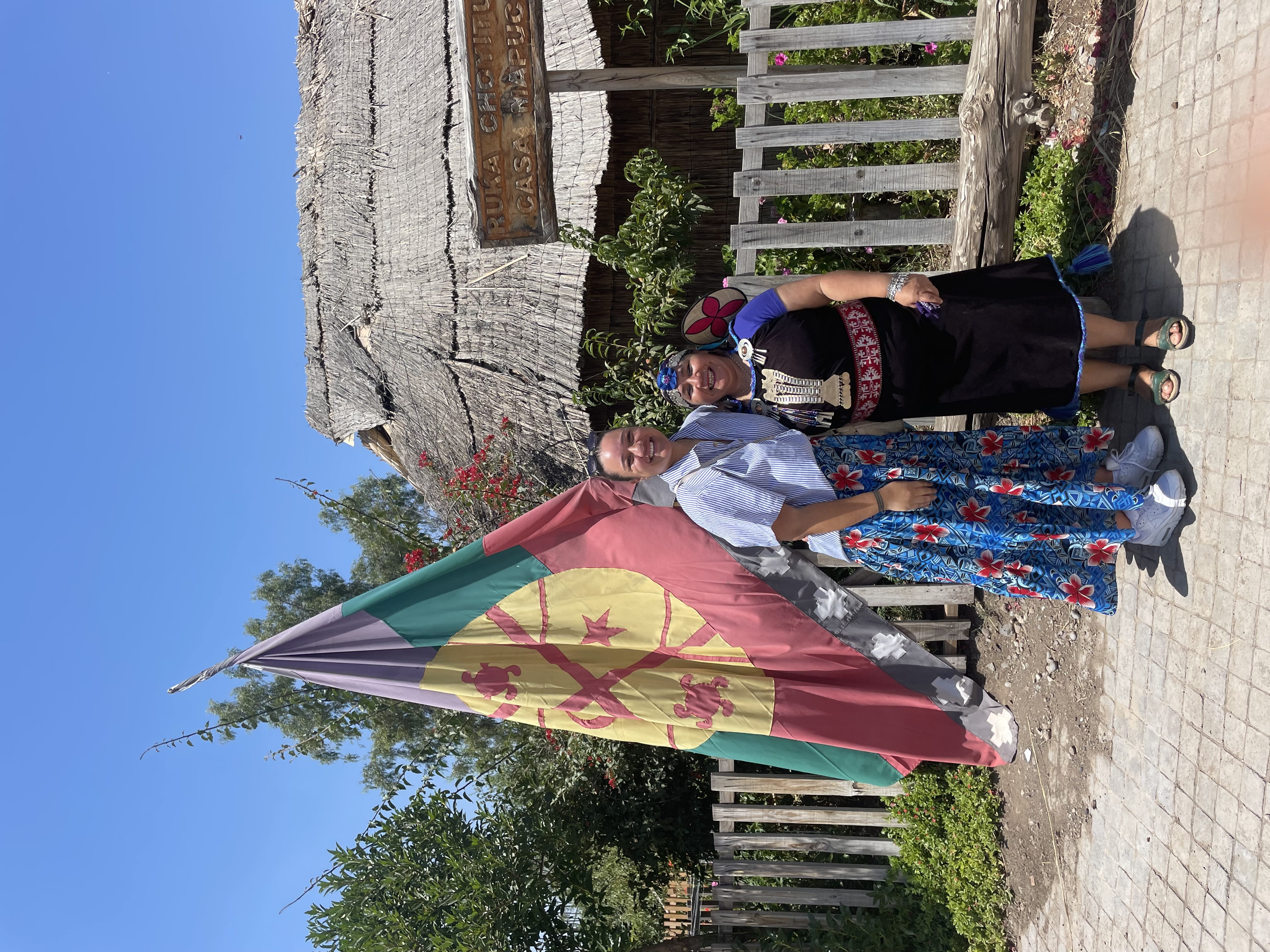This week was a reminder that Indigenous peoples worldwide remain interconnected through Tino rangatiratanga! We started the week learning about the eleven indigenous communities recognised here in Chile by the amazing Dr. Gabriela Pina. Her lesson explaining the ‘processes’ involved in indigenous identity politics made me think of how people associate with indigeneity. Furthermore, it made me realise how colonial forces push frames of indigeneity to further box already marginalised communities. It threw me into deep thoughts and ideas as I questioned what indigeneity is. How do we connect communities of indigenous peoples when our framings of indigeneity vary? What does it mean to be Indigenous? These questions were quickly answered by our time with the various indigenous communities.
Our group said ‘Mari Mari’ (greeting in Mapudugun) to the powerful Mapuche leaders who gracefully shared their ancestral knowledge with us. On Wednesday, the 24th of January, we visited our first-ever Mapuche Ruka at a cultural centre in Carlos Valdovinos. Here, we learned how to give offerings, the uses of ancestral instruments, and the meanings behind cultural dress. The sight of the Ruka made me feel immediately at home. The roof of the ruka resembled the upside-down tanoa-styled roof of a Samoan fale. The umu pit reminded me of the hangi pits in Aotearoa, and the hospitality from the Tías took me to my Aunties worldwide, who, regardless of whether you are full or not, will continue to feed you more. I had my first taste of yerba mate and thought of all the communities of indigenous love that were hosted in this very place. The gifted pounamu and Māori art found on the Ruka wall meant we knew we weren’t the first from Aotearoa and that our stories of home would only add to the existing presence of indigenous storytelling. Looking at the room full of people sharing stories over sopapilla and pebre reminded me of the spaces where indigeneity thrives, our homes.
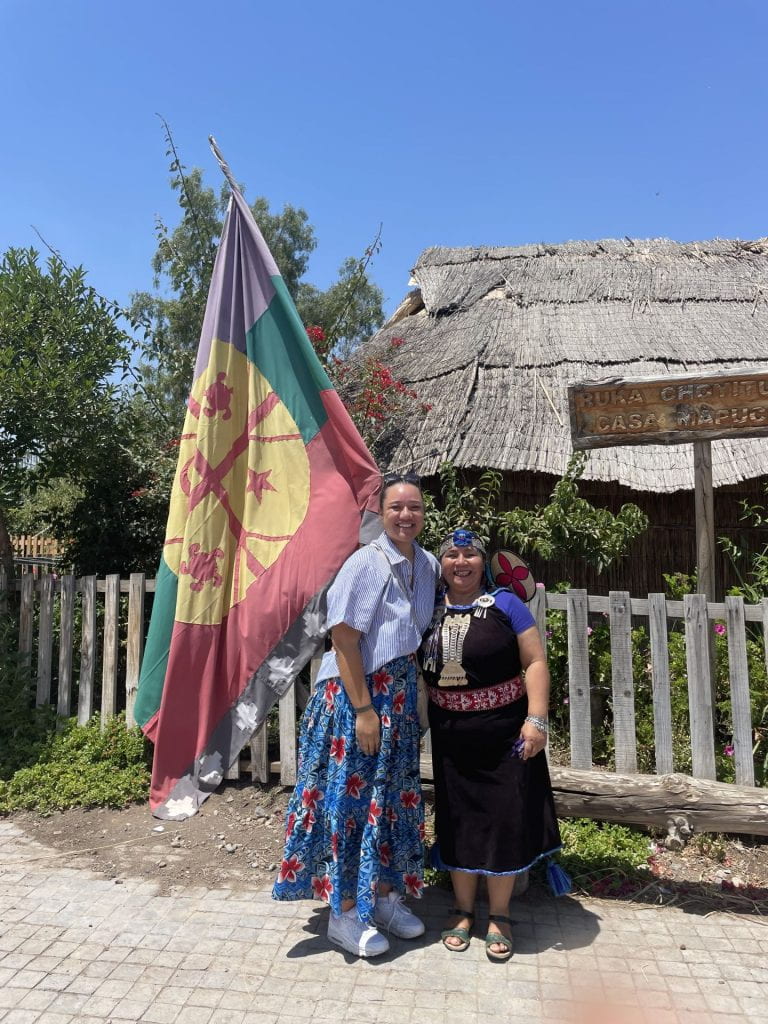
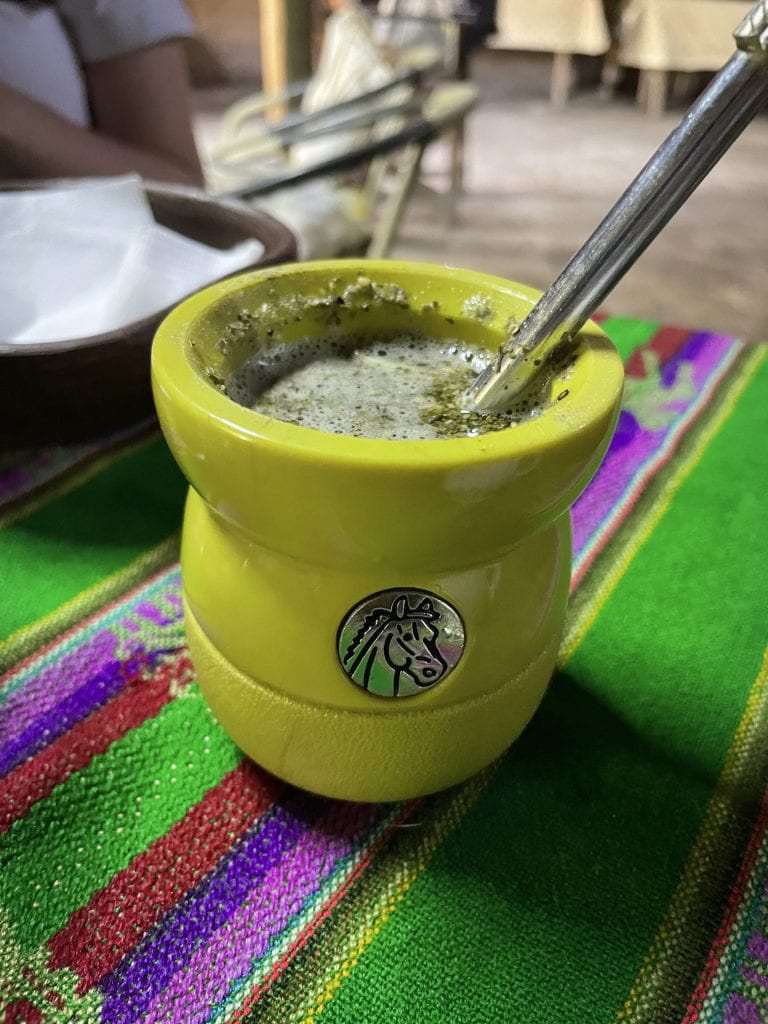
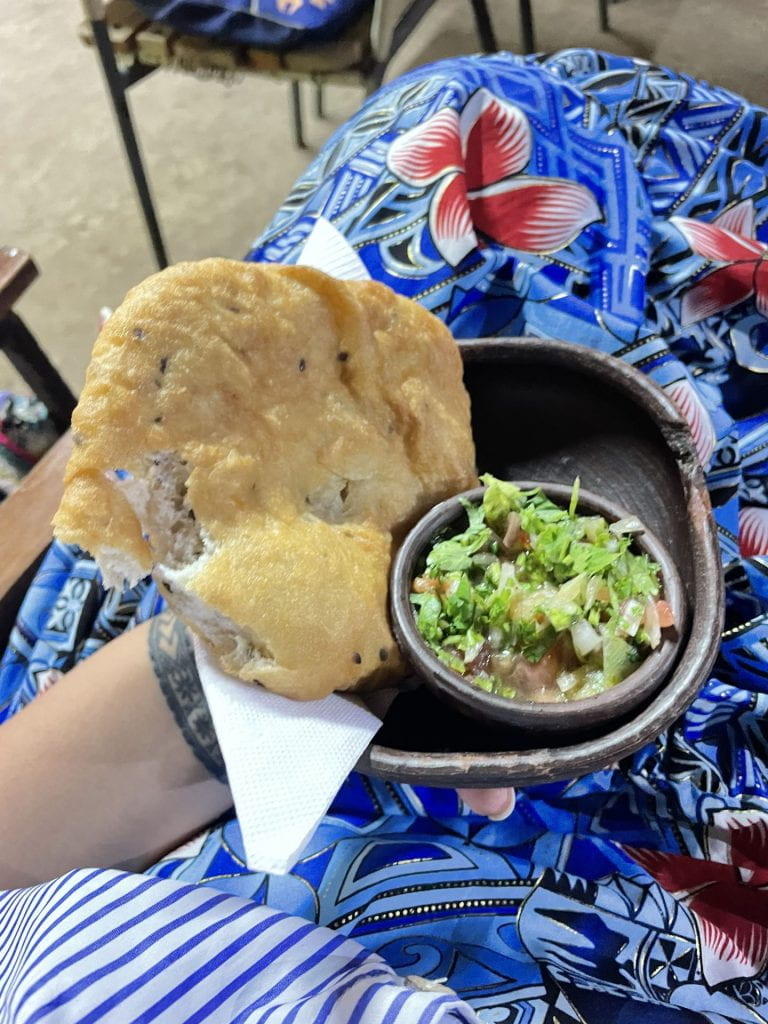
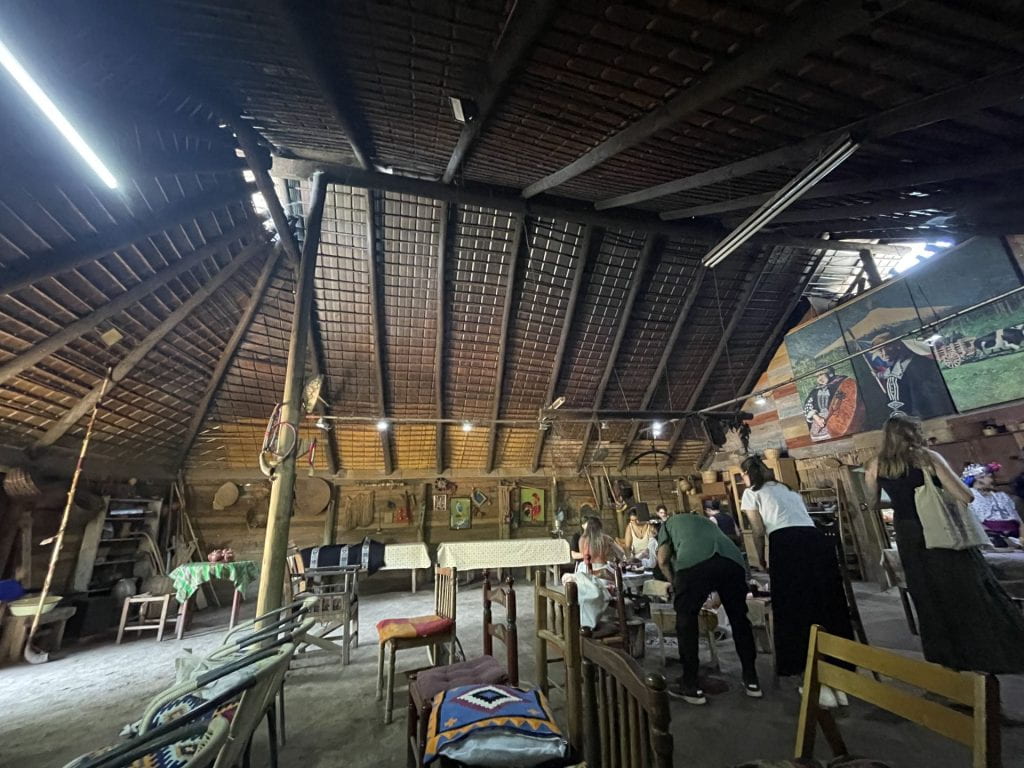
Feelings of homesickness hit this week. Learning about indigenous cultures that had many similarities with the fa’asamoa made me want to return to my motherland and share everything I had learnt. Hence, the opportunity to share more about my home at the Ministerio de Salud was a much-need fono. We met at the Ministerio de Salud with the Indigenous, Intercultural and Immigrant Health Unit, accompanied by the New Zealand Embassy on the 25th of January. I felt deeply humbled to sit in the policy space, pushing to implement and sustain interculturality. The mana in the space was felt as our group shared all we knew. At that moment, we felt we connected the Chilean and New Zealand health system to support our most marginalised communities. This opportunity reminded me that being indigenous isn’t simply a title but a responsibility to connect and platform the worldviews of those who have first nurtured the well-being of all.
To end the week of classes off, we went to the La Pintana commune to visit an Intercultural Health Centre. This centre has a ruka and huerta where indigenous health professionals and practitioners can use their indigenous medicines and healing practices to serve the well-being of the La Pintana community. Our group was deeply honoured to be allowed to visit the space and be treated as guests by the Intercultural Health Centres community. We learned about the amazing work the centre has been doing but also the struggles they have faced. Although facing many barriers, the Intercultural Centre team persevered for the well-being of their people. My time at the health commune taught me that indigeneity isn’t just about what we practice but also about what we help others to practice. The colonial contexts that many indigenous communities live in, whether the colonial context of their motherland or diaspora community, mean that health practices that go beyond physical health but interconnected well-being are always facing systemic barriers, at the least. The ability to practice our indigenous practices is a right, and ensuring we all have access to this right is vital to my role as a person indigenous to Samoa. La Pintana was a crucial reminder that collective healing is indigenous healing.
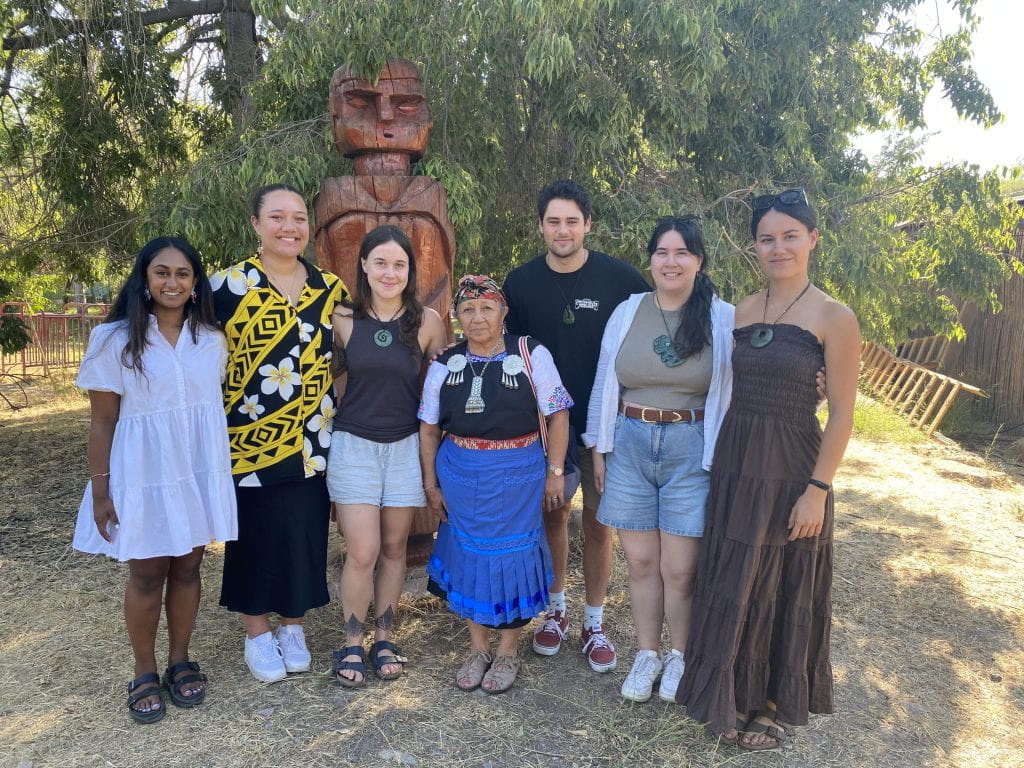
From the Ruka in Carlos Valdovinos to the Ministerio de Salud to the Intercultural Health Centre in La Pintana, I witnessed some of the work done in Santiago to serve the indigenous communities of Chile. The stories and sites of indigenous excellence and resilience were a necessary reminder of how indigeneity is not just an identity marker but also a reminder of our role in our communities. My experience from this week reminded me that in the same way the Moana-nui-a-kiwa guided my ancestors around the Pacific, the moana also brought me to Chile. I was deeply honoured to have been graced by ancestral greatness this week. Fa’afetai, fa’afetai, fa’afetai tele lava. Chaltumay.
